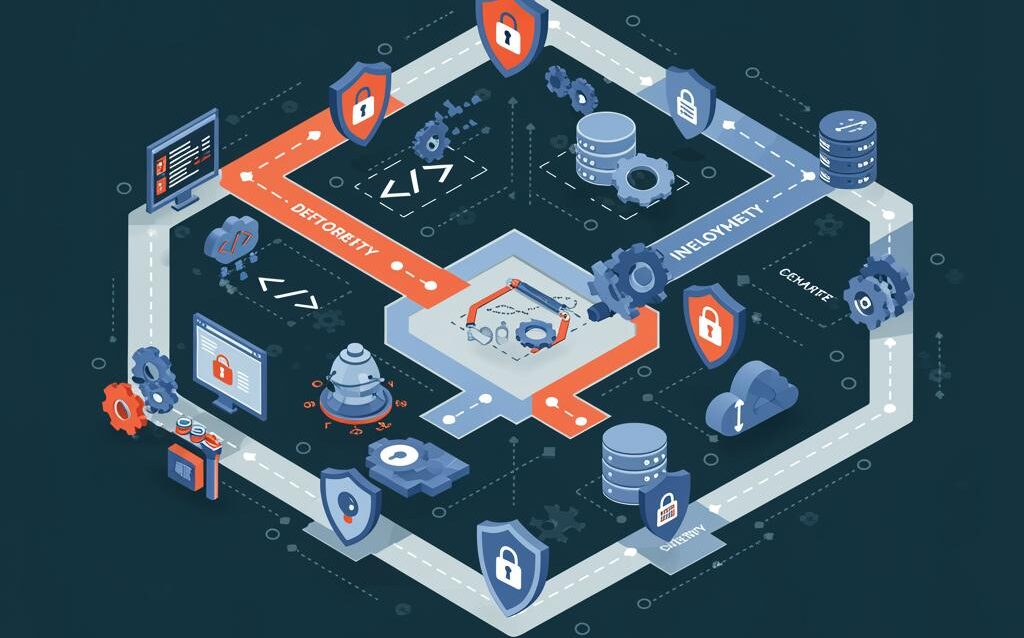Shift-Left Security: Secure Code from the Start
Shift-Left Security: Integrating Security into the Development Process
In today’s fast-paced software development landscape, security can no longer be an afterthought. Traditionally, security testing and remediation occurred late in the development lifecycle, often leading to costly delays and vulnerabilities being shipped to production. Shift-Left Security addresses this challenge by moving security considerations earlier in the development process, effectively “shifting” security concerns to the “left” of the timeline. This proactive approach helps identify and resolve security flaws during the design, coding, and testing phases, resulting in more secure and resilient applications.
Why Shift-Left Security is Crucial
There are compelling reasons to adopt a Shift-Left Security strategy:
- Reduced Remediation Costs: Fixing vulnerabilities early is significantly cheaper than addressing them in production. The later a flaw is discovered, the more complex and expensive it becomes to fix.
- Faster Development Cycles: By catching security issues early, developers can address them without disrupting later stages of development. This leads to faster release cycles and quicker time to market.
- Improved Security Posture: Integrating security into every stage of development fosters a security-conscious culture and results in more robust and secure applications.
- Reduced Risk: Identifying and mitigating vulnerabilities early minimizes the risk of breaches, data leaks, and other security incidents.
- Enhanced Compliance: Many regulations and standards (e.g., GDPR, HIPAA, PCI DSS) require organizations to implement security measures throughout the development lifecycle. Shift-Left helps meet these requirements.
Key Components of a Shift-Left Security Strategy
Implementing a successful Shift-Left Security strategy involves several key components:
Security Training for Developers
Developers are at the forefront of code creation and are crucial in identifying and preventing vulnerabilities. Providing comprehensive security training empowers them to write secure code from the start. This training should cover:
- Common Vulnerabilities: OWASP Top Ten (e.g., SQL Injection, Cross-Site Scripting) and other prevalent security risks.
- Secure Coding Practices: Input validation, output encoding, authentication, authorization, and session management.
- Security Tooling: Static Application Security Testing (SAST), Dynamic Application Security Testing (DAST), and Software Composition Analysis (SCA) tools.
- Threat Modeling: Identifying potential threats and vulnerabilities early in the design phase.
Integrating Security Tools into the CI/CD Pipeline
Automating security testing within the Continuous Integration/Continuous Delivery (CI/CD) pipeline is essential for continuous security. This involves integrating tools like:
- Static Application Security Testing (SAST): Analyzes source code for potential vulnerabilities without executing the code.
- Dynamic Application Security Testing (DAST): Tests running applications for vulnerabilities by simulating real-world attacks.
- Software Composition Analysis (SCA): Identifies and manages open-source components and their associated vulnerabilities.
- Interactive Application Security Testing (IAST): Combines the benefits of SAST and DAST by analyzing code while it’s running.
These tools should be configured to automatically scan code and generate reports, providing developers with immediate feedback on security issues. Failing builds should be triggered for critical vulnerabilities.
Threat Modeling
Threat modeling is a proactive process of identifying potential threats and vulnerabilities early in the development lifecycle. It involves:
- Identifying Assets: Determining what needs to be protected (e.g., data, systems, applications).
- Identifying Threats: Brainstorming potential threats that could compromise those assets.
- Identifying Vulnerabilities: Identifying weaknesses that could be exploited by those threats.
- Prioritizing Risks: Assessing the likelihood and impact of each threat.
- Developing Mitigation Strategies: Implementing controls to reduce or eliminate the identified risks.
Threat modeling should be an iterative process, performed throughout the development lifecycle as the application evolves.
Security Code Reviews
Code reviews are an effective way to identify security vulnerabilities that may have been missed by automated tools. Security-focused code reviews should be conducted by experienced security professionals or developers with strong security knowledge. These reviews should focus on:
- Adherence to Secure Coding Practices: Ensuring that code follows established security guidelines.
- Identifying Potential Vulnerabilities: Looking for common security flaws, such as SQL Injection, Cross-Site Scripting, and Buffer Overflows.
- Validating Input and Output: Ensuring that data is properly validated and sanitized.
- Authentication and Authorization: Verifying that authentication and authorization mechanisms are properly implemented.
Overcoming Challenges in Implementing Shift-Left Security
While the benefits of Shift-Left Security are clear, implementing it can present some challenges:
Resistance to Change
Developers may be resistant to adopting new security practices, especially if they perceive them as slowing down the development process. Overcoming this resistance requires strong leadership support, clear communication, and demonstrating the benefits of Shift-Left Security.
Lack of Security Expertise
Many development teams lack the necessary security expertise to effectively implement Shift-Left Security. This can be addressed by providing security training, hiring security specialists, or outsourcing security testing to third-party providers.
Tooling Complexity
Security tools can be complex to configure and use. Choosing the right tools and providing adequate training are essential for successful integration into the CI/CD pipeline.
Conclusion
Shift-Left Security is a critical strategy for building secure and resilient applications in today’s threat landscape. By integrating security into the development process from the earliest stages, organizations can reduce remediation costs, accelerate development cycles, improve their security posture, and minimize risk. While implementing Shift-Left Security may present some challenges, the benefits far outweigh the costs. By investing in security training, integrating security tools into the CI/CD pipeline, and fostering a security-conscious culture, organizations can effectively shift security to the left and build more secure software.

